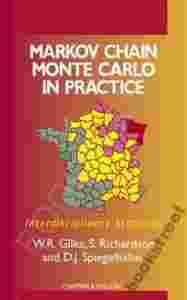|
In a family study of breast cancer, epidemiologists in Southern California increase the power for detecting a gene-environment interaction. In Gambia, a study helps a vaccination program reduce the incidence of Hepatitis B carriage. Archaeologists in Austria place a Bronze Age site in its true temporal location on the calendar scale. And in France, researchers map a rare disease with relatively little variation.
Each of these studies applied Markov chain Monte Carlo methods to produce more accurate and inclusive results. General state-space Markov chain theory has seen several developments that have made it both more accessible and more powerful to the general statistician. Markov Chain Monte Carlo in Practice introduces MCMC methods and their applications, providing some theoretical background as well. The authors are researchers who have made key contributions in the recent development of MCMC methodology and its application.
Considering the broad audience, the editors emphasize practice rather than theory, keeping the technical content to a minimum. The examples range from the simplest application, Gibbs sampling, to more complex applications. The first chapter contains enough information to allow the reader to start applying MCMC in a basic way. The following chapters cover main issues, important concepts and results, techniques for implementing MCMC, improving its performance, assessing model adequacy, choosing between models, and applications and their domains.
Markov Chain Monte Carlo in Practice is a thorough, clear introduction to the methodology and applications of this simple idea with enormous potential. It shows the importance of MCMC in real applications, such as archaeology, astronomy, biostatistics, genetics, epidemiology, and image analysis, and provides an excellent base for MCMC to be applied to other fields as well.
|

